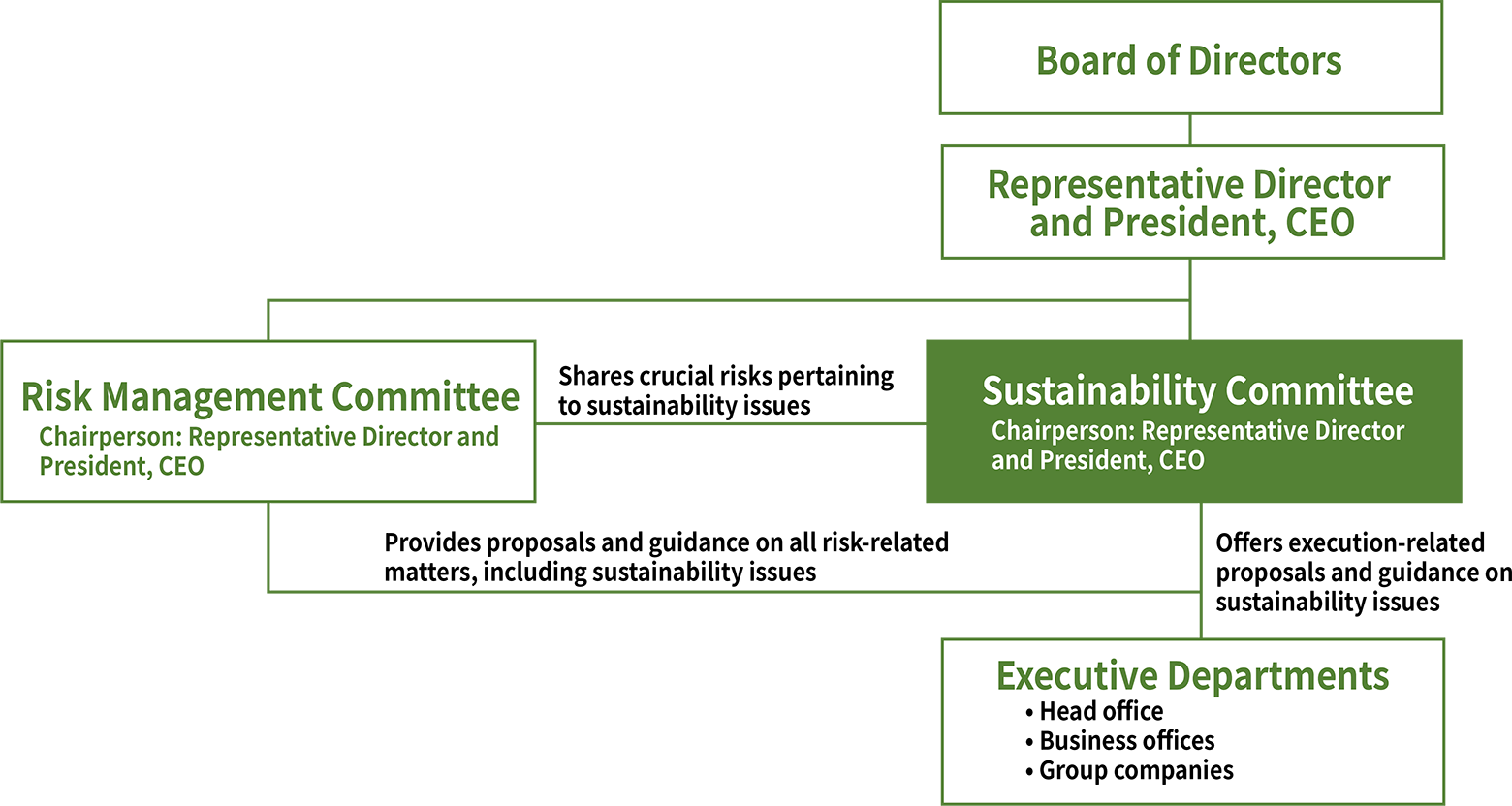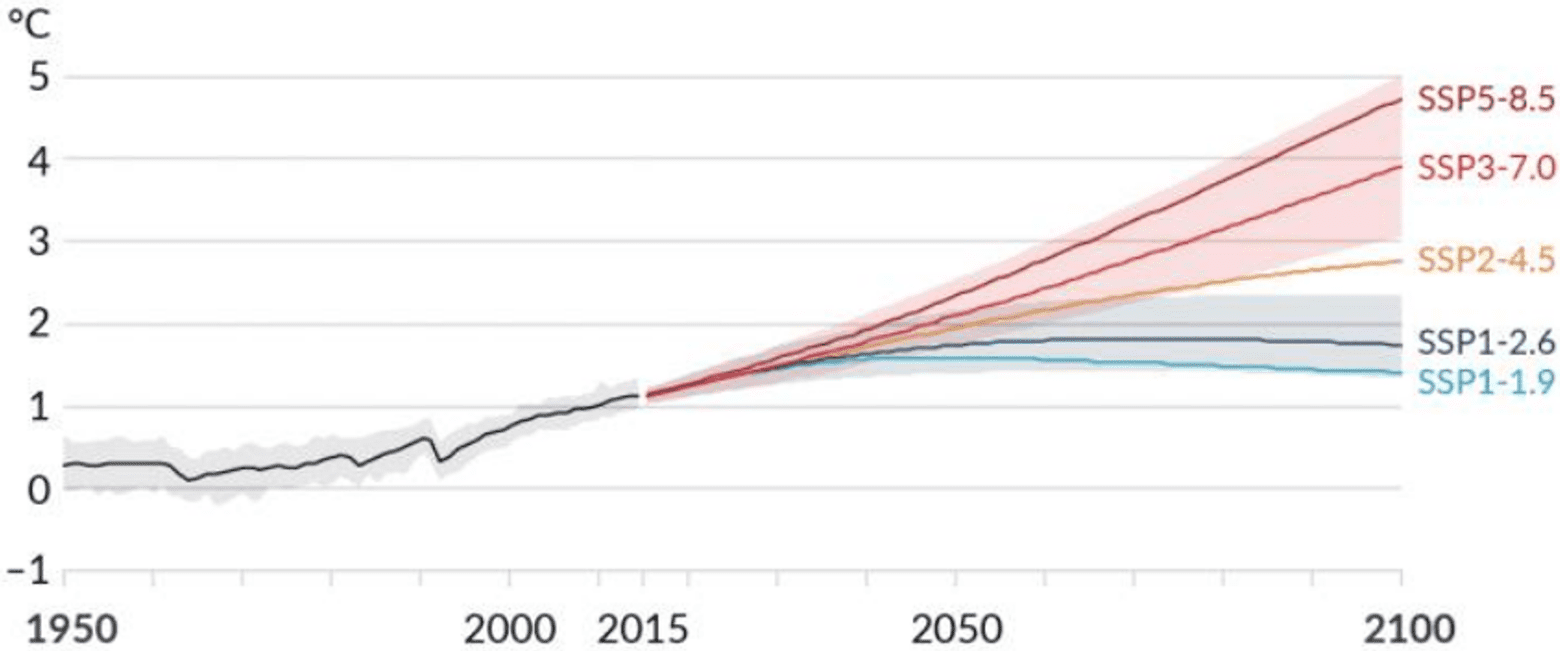- TOP
- Sustainability
- Climate Change Efforts
 Climate Change Efforts
Climate Change Efforts
Climate Change Efforts (Disclosures based on the TCFD Recommendations)
The CTI Engineering Group (the “Group”) announced its support for the Task Force on Climate-related Financial Disclosures (TCFD) recommendations in March 2020 and established the “CTI Engineering Group Challenges for Sustainability Promotion Plan (released December 8, 2022)” in December 2022, aiming to tackle climate change and achieve sustainability through infrastructure development. The Group is committed to making its own activities net zero as a member of the community and society, along with contributing to building a sustainable community and society by leveraging the Group’s technologies.
1. Governance
-
We have developed a governance system by establishing the Sustainability Committee (Chairperson: Representative Director and President, CEO) at the same level as Management Meeting and incorporating sustainability into management issues. The Sustainability Committee deliberates on policies related to research, technology development, human resource training, and other contributions to reducing greenhouse gas emissions and building a sustainable community. Decisions are made on key matters following deliberations at the executive officers’ meeting and the Board of Directors’ meeting.

Governance System Diagram
-
The progression of climate change in tandem with global warming will result in various risks and opportunities for the Group’s business in the medium to long term. To identify and assess their impact on the Group’s finances and strategies and to appropriately reflect such risks and opportunities into our management policy, we collect and analyze information and assess impacts mainly through the Green Investment Strategy Working Group under the Sustainability Committee. The Committee then determines the action policies and plans of the Group.
2. Strategy
-
We have conducted a qualitative assessment of the major risks and opportunities anticipated in the medium to long term, based on the scenarios assumed in the impact assessment of the Group’s business. The risks and opportunities identified were as follows. Transition risks included bolstered emissions regulations, such as carbon taxes levied on business activities; and the Group’s increased social responsibility due to heightened awareness of climate change in society. Physical risks included more natural disasters, such as typhoon and heavy rain. Opportunities included rising demand for social infrastructure planning and designing in order to prevent and mitigate disasters caused by growing climate change impacts, as well as demand for services to transition to decarbonized energy sources, such as renewable energy.
We will assess the risks and opportunities for the Group’s business, both quantitatively and precisely, and enhance our strategy to contain more specific countermeasures and other content.
3. Risk management
-
The progression of climate change in tandem with global warming will result in various risks and opportunities for the Group’s business in the medium to long term.
We have established the Risk Management Committee to promote appropriate risk management for the Group based on its risk management regulations, including identifying and controlling risks that could negatively impact our business operations before such risks materialize.
The Sustainability and Risk Management Committees will work together to manage the risks associated with climate change.
4. Metrics and targets
-
The Group aims to reduce the environmental impact of its own corporate activities. Furthermore, fulfilling its responsibility as a company engaged in public projects, the Group aims to improve the sustainability of local communities, and thereby, enhance its corporate value built on the trust and empathy of relevant stakeholders. To this end, we have established the following targets. For Scope 1 and Scope 2 emissions, “Reduce carbon dioxide emissions from corporate activities to virtually zero by 2030.” At the same time, “We will establish a budget line for CTI Group sustainable investment and invest in projects that improve the sustainability of local communities, while promoting related research and development and human resource development.”
[Reference] Scenarios for assessing climate change impact
For assessing the impact of climate change, the Group adopted scenarios used by the Intergovernmental Panel on Climate Change (IPCC), specifically the 1.5°C scenario (SSP1-1.9) and the 4°C scenario (SSP5-8.5).
In the 1.5°C scenario, it was assumed that, to keep the change in the Earth’s average temperature to below 1.5°C, a socio-economic environment is realized where various policy measures are implemented with the aim of decreasing emissions to net zero by 2050, and a shift to decarbonized energy sources, such as renewable energy, and improved energy efficiency are promoted.
In the 4°C scenario, it was assumed that a socio-economic environment is realized where current levels of efforts are maintained, and policy measures such as carbon taxes are not introduced. As a result, climate change due to global warming progresses, leading to rising demand for adaptation measures for climate change impacts, such as increased floods and other natural disasters.
Based on these scenarios, we analyze the risks and opportunities for the Group’s business and make disclosures on high-priority risks and opportunities for the Group.
(a) Global surface temperature change relative to 1850~1900

Source: Japan Meteorological Agency, “Summary for Policymakers, IPCC AR6 WG1 Report (Provisional Translation),” December 2022.